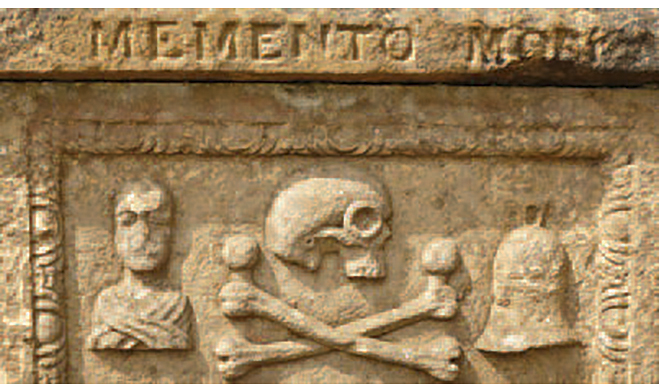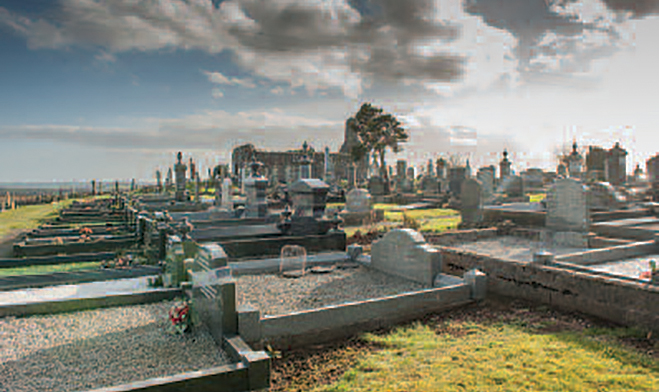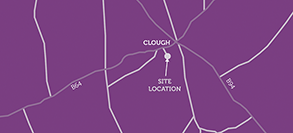Pre-Reformation Trail
Dunaghy
A great number of sepulchral monuments.
Access details
The churchyard is accessed is by a lane off the B64 (Springmount Road), near the village of Clough.RPC
Grid Reference
The church
The present ruins are likely to have replaced a medieval church. By 1622 the church was ruined but was later repaired, probably by Randal MacDonnell, 1st Earl of Antrim. This area was within his estate and he had a castle at Clough, the ruins of which are still standing. Although MacDonnell was Roman Catholic he repaired and built Protestant churches on his estate to attract Scottish settlers.
Andrew Rowan was minister here from the late 1650s until his death in 1717. He was one of only a handful of Scottish ministers in Ireland to conform to the Established Church and renounce the Covenants in 1661. During his time many minor repairs were carried out. In 1814, the church was described as 'cove ceiled and neatly seated... There is no belfry, but two small columns with a circular top erected on the western gable, wherein is placed the bell...'
In 1835, the church was described as a 'very plain, old building in bad order and badly roofed...' At this time the church could hold 110 people. Shortly after this, a new church was built in the village of Clough and the church at Dunaghy was abandoned.
The graveyard
This is one of the largest graveyards in the Ballymena area. It was extended, probably in the late 1800s and is still in use today. The graveyard contains over 500 memorials, mostly connected with the 1900s. Around 20 memorials date prior to 1800.
The most elaborate tombstone in the graveyard is the large memorial to Samuel Cupples which includes a panel displaying the mortality symbols of skull and crossbones, and bell. Identical monuments can be found in Glenarm and the parish of Ramoan, suggesting the work of the same stonemason.
The headstones in this graveyard suggest that there was considerable emigration from the area. The most popular destination was North America but some locals also emigrated to Australia, Malawi, England and elsewhere in Ireland.
Boyd and Rowan family
There is a headstone for Captain Hugh Boyd and his wife, Margaret Rowan. It is thought that Margaret Rowan may be the daughter of the Rev. Andrew Rowan who had been the minister at this church from the late 1650s until his death in 1717.
Douglas family
Ann, the wife of Reverend Joseph Douglas who was a Presbyterian minister in Dunaghy from 1760 until 1795 is also thought to be buried in the graveyard. Joseph Douglas was also the captain of the Clough Volunteers and it is said that he sometimes wore his volunteer uniform while preaching in the pulpit.
Maine family
The Reverend William Maine was rector of Dunaghy for twenty five years. He died in 1816 and is buried in the graveyard along with members of his family.
McClure family
There are several McClure memorials in the graveyard. This family descended Samuel Sidney McClure who had a successful publishing career and was a pioneer of investigative journalism in America.
| Churchyard Facts & Figures | |
| First used as a Christian religious site | Unknown, first reference c.1300 |
| Papal taxation of c.1300 | £8 10s 8d |
| Church name used in Papal taxation c. 1300 | Donaci |
| Church size | Post medieval church - 14.5 m by 7.2 m (interior) |
| Discontinued use of church | 1842 |
| Replaced by | St James' Church of Ireland, Clough, 1842 |
| Townland | Glebe |




